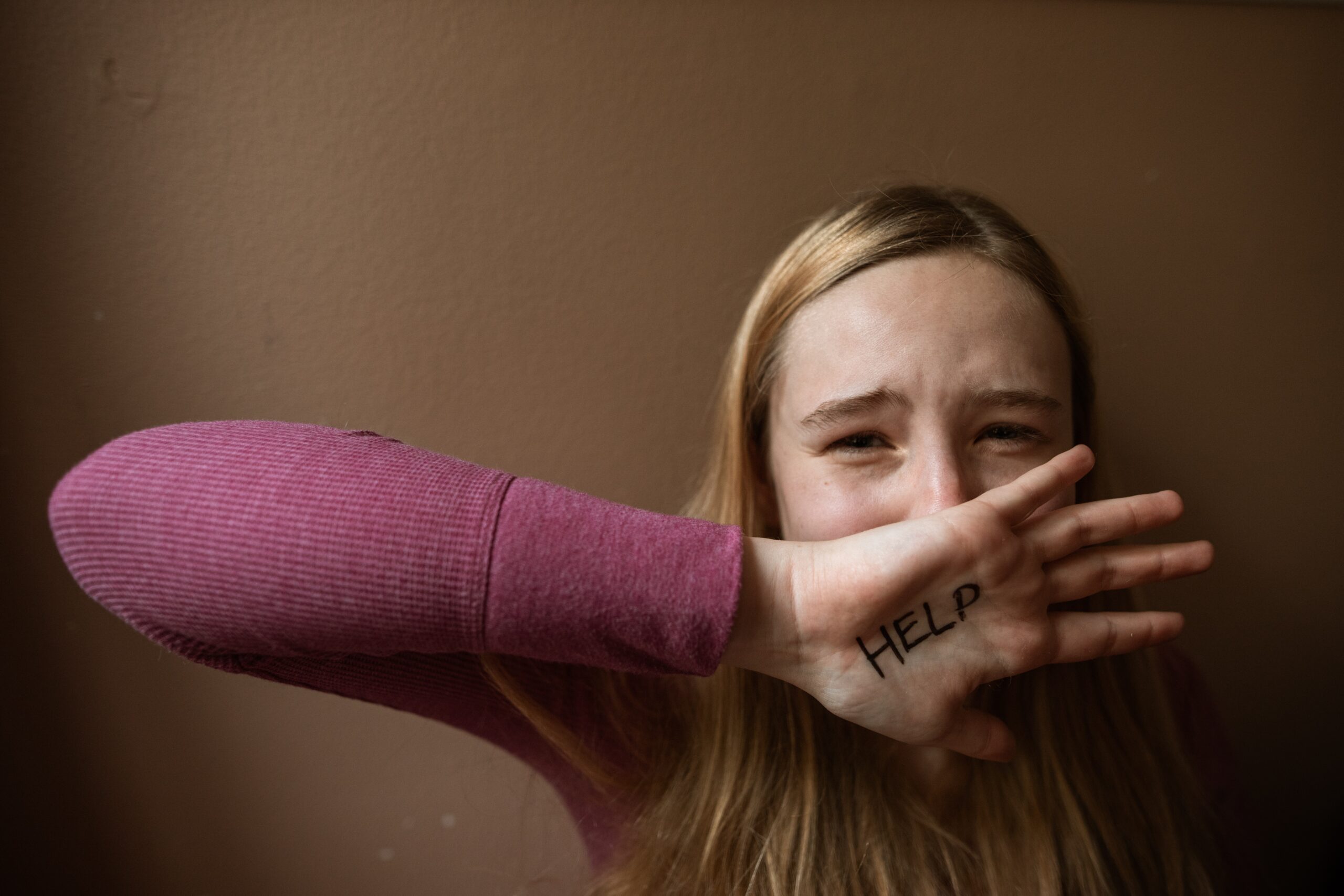![]()
Introduction
Many of the world’s countries either do not recognise sexual assault in marriage or imposes lesser penalties when compared to other rapes. This particular form of “gendered violence” ensures impunity for men who engages into acts of this nature with their wives, thereby legitimizing this particular form of violence. Such failures are a representation of the fundamental human rights of women inclusive of undermining their right of equal benefit of law.
This focus of this essay is on the Indian debate on marital rape. It begins with an analysis of the nature of the problem followed by the opinions presented in Law Reports and Commissions. Then, it goes on to identify the fundamental rights violations of the Indian Constitution meted out by non-criminalisation. It seeks the assistance of various international instruments to strengthen the demand of reversal of its current status in India. The essay also attempts to discuss the role of culture behind this reluctancy of various governments to reform the provision of marital rape before concluding that criminalisation of rape within marriage and relationships of similar nature is necessary to end this violence concerning a particular group of women.
Marital Rape in Indian Context
The exception to Sec 375 of the Indian Penal Code states: “Sexual intercourse by a man with his wife, the wife not being under fifteen years of age, is not rape”. What the exception does is that it explicitly exempts the instance of unconsensual sex from the definition of rape if the age of the wife is above fifteen years. In simpler words, it decriminalises marital rape in India. Such an exception, in very obvious terms, stand against the very basic principles championed by the Constitution of India.
- The 42nd Law Commission Report: The report highlighted the presumption of consent that operates when there is cohabitation between the married couple and the differentiation between marital rape and other rape. However, no explicit comments in regards to the retention or deletion of the exception clause can be found.
- The 172nd Law Commission Report: The Report was a result of the directions of the Supreme Court given in the case of Sakshi v Union of India[1].
This report discussed the validity of the exception of marital rape directly. It did recommend raising the age of the wife from fifteen to sixteen but rejected the deletion of the exception citing the reason that it would lead to an “excessive interference with the marital relationship” - Justice J.S. Verma Committee Report: A departure from this line of reasoning was witnessed in the committee constituted under Justice J.S.Verma which recommended the deletion of the exception clause and also to specifically provide that a marital relationship is not a valid defence. These recommendations, however, were not incorporated in the final Criminal Law Amendment Act 2013 that came about.
- Criminal Law Amendment Act, 2013: The infamous Delhi gang-rape in late 2012 brought India’s rape laws under public scrutiny which eventually led to its overhaul. The 13th Criminal Law Amendment Act, 2013 made amends to the provisions of rape which included, among others, raising the limits of minimum and maximum punishments. Even though the Amendment was a culmination of several deliberations and discussions, it did not tinker with one highly contentious provision of the marital rape provided under Exception 2 of Sec 375 of the Indian Penal Code, 1980.
The definition of rape as it stands in Sec 375 is expansive that goes beyond the traditional notion of rape and provides criminal recourse for acts which need not necessarily involve penetration. But the exception of marital rape denies a wife a recourse under criminal law if raped by her husband.
Marital Rape and its Harmful Impacts
Reforms to the laws have been introduced from time to time in India. The definition of rape was made much more comprehensive and severe punishments were imposed but the particular issue of sexual assault perpetrated against women by husbands relatively remains privatized. The offence of sexual assault affects a woman beyond the physical pain and injury. It has the capacity to destabilise her mentally hampering her future, be it professionally or personally where she hesitates to trust people around her. Many argue that other Acts such as the Protection of Women from Domestic Violence Act, 2005 are sufficient to address the lacunae that exists in the Indian Penal Code. However, remedies listed in the Act are of civil nature with no plenary provisions.
The dynamics of relationship between the victim and the perpetrator also seem to “alter beliefs about both parties involved in conflictual interactions.” As a result, the authorities involved also make different attributions based on the marital relationship.
Constitutional Challenges
Right to Equality
Article 14 of the Indian Constitutionreads: “The State shall not deny to any person equality before the law or the equal protection of the laws within the territory of India.” However, by failing to remove the marital rape exception, the Indian criminal law discriminates against those female victims who are above 15 years of age and have been raped by their husbands.
This exception creates two separate classes of persons: married and unmarried women, the latter being further divided into those above and below 15 years of age. The creation of classes automatically attracts the equality principle. It needs to demonstrate a rational nexus of this classification to the legitimate state objective to survive the challenge of unconstitutionality. Though it appears that the section merely criminalises certain kinds of sexual intercourse but on a closer look, becomes clear that the differentiation is on the ground of the marital status.
Originally, when the IPC was drafted, the independent identity of women was not recognised. They were considered subordinate to men in all spheres, politically, economically, socially and even sexually. Men were regarded as the representatives of interest of women. On similar lines, they did not possess the right to refuse sexual intercourse. Such disability was one among many known as “coverture rules”- a broad doctrine that the husband subsumes the rights of the wife when they marry. Therefore, the marital rape exception finds its justification in denial of a woman’s autonomy and other civil rights.
But times have changed and so has the scenario. The present law system in India recognises women as independent entities, separate from their husbands and even advocates affirmative action as compensation for their suffering to protect their interests in future. The judiciary through its judgements such as Joseph Shine v. Union of India[2], has played a significant role to bring this change by criticising the long held notions of patriarchal dominance. For the continuance of such an outdated law into the present world, a different justification than before is mandated. A reasonable classification, as laid down in Anwar Ali Sarkar v. State of West Bengal[3] , must be found on the following:
- intelligible differentia which distinguishes those who are grouped from others; and
- this differentia must have a rational relation to the object sought to be achieved by the legislation.
But no rational nexus seems to exist which can satisfy the requirements. On the contrary, the exception frustrates the very purpose of Sec 375 to punish those guilty of this inhumane act by extending immunity to husbands. The failure to satisfy the conditions, automatically, makes it contrary to the principle of equality as laid down in Article 14 of the Constitution of India.
Protection of Life and Personal Liberty
Article 21 of the Constitution of India states: “No person shall be deprived of his life or personal liberty except according to procedure established by law”.
The evolution of Indian jurisprudence in regards to this Article has been perhaps, the most elaborate. This particular right has gone beyond the literal guarantee to life and liberty to include the rights of various nature such as that of health, safe and clean environment, work etc. The courts have also acknowledged a right to abstain from sexual intercourse to be within the implication of the right to life.
In The State of Karnataka v. Krishnappa[4] [(2000) 4 SCC 75], it was held by the Supreme Court that “sexual violence, along with, being a dehumanizing act, is also an unlawful intrusion of the right to privacy and sanctity of a female.” Later, in Suchita Srivastava v. Chandigarh Administration[5], the right to makes sexual activity choices were equated with those of personal liberty, bodily integrity, privacy etc. The strongest and recent judicial recognition of the cause of criminalisation of marital rape is the case of Justice K.S.Puttuswamy(Retd) v. Union of India[6], famously known as the privacy case. The case not only recognised privacy as a fundamental right but also stated that it includes “decisional privacy reflected by an ability to make intimate decisions primarily consisting of one’s sexual or procreative nature and decisions in respect of intimate relations”. It cannot also be denied that an act of such nature, besides adversely affecting the victim physically and mentally, also undermines her ability to live with dignity. Thus, forced sexual intercourse, irrespective of any factors, is a violation of this fundamental right.
Contravention with International Law
Various international instruments and protocols promote the cause of fundamental rights of humans. These fundamental rights are not only limited to those such as life, dignity, equality but also encompasses other underlying rights. We shall discuss these instruments below.
Convention on the Elimination of All Forms of Discrimination against Women, 1979 (CEDAW)
CEDAW. Adopted in 1979 by the UN General Assembly if often recognised as an international bill of rights of women. It defines discrimination against women and also outlines an agenda for the end of the same.
Article 1 of CEDAW defines discrimination against women as “any distinction, exclusion or restriction made on the basis of sex which has the effect or purpose of impairing or nullifying the recognition, enjoyment or exercise by women, irrespective of their marital status, on a basis of equality of men and women, of human rights and fundamental freedoms in the political, economic, social, culture, civil or any other field.” Thus, such exclusion of criminalisation of marital rape fits into this very discrimination as the only cause of such differentiation is the marital status of the victim.
U.N. Declaration on the Elimination of Violence Against Women[7] provides for internationally agreed definition of violence which specifies marital rape encompassed within the definition under Article 2(a) of the instrument. India has failed to fulfil its obligations to take appropriate measures, including legislation, to modify and abolish existing laws, customs and practices that discriminate against women. The General Legislative Measures provided in paragraph 29 of GR 35 requires states to “ensure that definition of sexual crimes, including marital and acquaintance/ date rape is based on the lack of freely given consent and takes into account coercive circumstances”.
India, by virtue of its ratification, is bound to take the necessary measures, legislative and otherwise, to give effect to the recognised principles. However, despite a clear statement to consider consent, India has not criminalised marital rape which can be viewed as its failure to abide by due diligence obligation.
International Covenant on Civil and Political Rights, 1966 (ICCPR)
The Convention was adopted by the General Assembly in 1966 in accordance with Article 49 of the UN Charter. It came into force on 23rd March, 1976.
The Covenant obliges the State Parties to respect the recognised rights without any distinction of any kind which includes sex and status. It also protects rights of the spouses during marriage but the exception clearly absolves the husband of his duty to not commit a crime against the wife thereby impinging on her right of safety. No criminal recourse also defied the equality before the law principle. ICCPR requires equal and effective protection against discrimination through domestic laws but India, being a party to the Covenant has faltered in its commitment to uphold the principles of the covenant.
Contradictory to Other Laws
The Prohibition of Child Marriage Act, 2016, as the name suggests, was enacted for the prohibition of solemnisation of child marriages. The definition of a child[8], in the Act, means a person who has not completed 21 years of age in the case of a male and 18 years in the case of a female. The legislation not only fails to recognize child marriage as void ab initio but stands in contradiction to exception 2 of Sec 375 of IPC which consciously provides a provision where the age of wife can be 15 years. The POCSO Act, a law passed in 2013 defines a child as somebody below the age of 18 years and regards sexual assault of a minor as a serious offence. The Juvenile Justice Act clearly states that a child in danger of being married off must be given protection. The government has at times, justified that consent is implicit when it comes to a married child but such an argument is bizarre and ludicrous as other laws of the country do not even recognize explicit consent of a child below 18 years of age. Thus, it is difficult to determine the exemption under IPC when the other statutes outlaw sexual intercourse with a minor.
Culture and Marital Rape
The relationship between law and culture can be analogous to a “symbiotic relationship”, thereby each influencing and being influence by the other. The institution of marriage in India is one of great sanctity. The roles assumed by the individuals reflect old archaic notions of sexual supremacy where the husbands are the dominant force whereas women showcase a docile nature responsible for nurturing the family. This flawed design of the sanctified institution of marriage presupposes the consent of women into the act of forced sex thereby reducing the women into a living corpse. This debate, however, becomes irrelevant as the matter of criminalization of marital rape is one of the violations of the fundamental rights enshrined in the Constitution and would not be the first instance where law moves against the established cultural ideas.
Judiciary and Marital Rape
Multiple petitions have been filed demanding criminalization of marital rape but are yet to reap any benefits. A 2015 petition filed by a woman was not entertained by the SC citing that the cause is personal and not public. The case of Independent Thought v. Union of India and Anr[9] was a partial victory for the advocates of criminalisation of marital rape. The SC read down the exception of marital rape and recommended to strike it down so far as it relates to a girl child below 18 years. There seems to exist a dissonance when it comes to the nature of marital rape among the various courts of the country. A recent case could be cited where the Chhattisgarh High Court pronounced that the “sexual intercourse or any sexual act by a husband with his wife could not constitute rape even if it was by force or against her wish”. Though the husband was discharged of the charge of rape was the charges of unnatural offences, cruelty was upheld. The court, basing its judgement on the explicit exception disregarded the essential elements of will, consent and health. On the other hand, the Kerala High Court ruled in a civil case that though the act of marital rape cannot be penalised, it can be a ground to claim divorce.
Legal Position in other Countries
- England: The landmark judgement of Regina v. R in 1991 was the shift that criminalised marital rape. A man was convicted of attempting to rape his wife who the, challenged it which eventually went to the House of Lords. It denied to recognise the irrevocable submission of a wife to sexual intercourse. This illegality has been explicitly laid down under the Sexual Offences Act, 2003.
- USA: Marital rape remains criminalised in 50 states of America but the provisions vary. Comments have been made against the loopholes that exist in the legislation thereby creating circumvention to aid the escape of the husband from punishment.
Conclusion
India remains one of the few countries all over the world which has not criminalised marital rape. Despite the intent of the people at large and various communities, marital rape continues to be patriarchal and archaic, considering women as mere property of the husband with no agency over their own body. But it is high time that the Parliament recognizes it as an offence, no different than rape. Along with the removal, it is also necessary to not presume consent because of the relational aspect. Statutory change shall also be accompanied with campaigns of judicial and public education to raise awareness.
The marital status cannot be used as an excuse to treat it as an exception. On the contrary, it should be far graver as in the words of psychologists D Finekelhor ad K Yllo: “When a stranger does it, he doesn’t know me, I don’t know him. He’s not doing it to me as a person, personally. With your husband, it becomes personal. You say this man knows me. He knows my feelings. He knows me intimately and then to do this to me- it’s such a personal abuse”.
References:
[1] (2004) 5 S.C.C. 518
[2] (2018) S.C.C. Online SC 1676
[3] A.I.R. 1952 SC 75
[4] (2000) 4 S.C.C. 75
[5] Civil Appeal No. 5845 of 2009
[6] (2017) 10 S.C.C. 1
[7] G.A. Resolution 48//104 of December 1993
[8] Sec 2(a) of the Prohibition of Child Marriage Act, 2006
[9] (2017) 10 S.C.C. 800



0 Comments